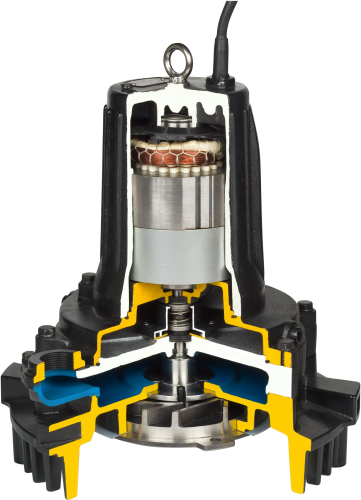
Tsurumi Europe has seen a 25% increase in its submersible aerator pump business since the launch of its TRN series a year ago, reflecting a growing demand for advanced water treatment technology.
Carsten Bode, product manager at Tsurumi Europe, gave some insight into the growth: “They provide a benefit to smaller and municipal wastewater treatment plants with tighter budgets. Such plants are found mostly in Eastern Europe, where we have seen the biggest increase in business.”
Russian mine operators, for example, have always needed robust technology to enable them to operate in all conditions. Further afield, Tsurumi has also delivered its rugged submersible aerators for use in mobile container treatment plants in Africa.
Application
Tsurumi believes that the applications for submersible aerators are vast. In sewage treatment works they are often used in classical activated sludge basins, while in industrial biological pre-treatment plants the use of aerators is also common.
Mr Georg Bacs, Environmental Specialist from Gauting, near Munich, describes a typical application: “If fresh water becomes unbalanced through increasing algae development, a submersible aerator can help to solve the problem of eutrophication (massive algae growth) by bringing in oxygen, which small drifting animals need to increase their population and to consume the algae. Small and mobile installations usually require aerators with up to 7.5 kW of power. For stationary installations, up to 40 kW is available. This enables air input to reach 600 m3 per hour per machine.”
The TRN series offers patented oil filter technology, an extra large oil chamber and the new air-seal-principle, which ensures that the double mechanical seal never comes into contact with the water during operation. This ensures increased wear and expensive repairs are avoided.
Tsurumi argues that when compared to membrane aerators, there are three advantages that submersible aerators offer. Firstly, installation is cheaper. Secondly, there is no lengthy preparation; the aerators can be lowered into any basin and do not require a compressor. Finally, the technology requires almost no maintenance as there are no membrane pores which could get clogged or blocked, avoiding expensive repairs and prolonged interruptions.





